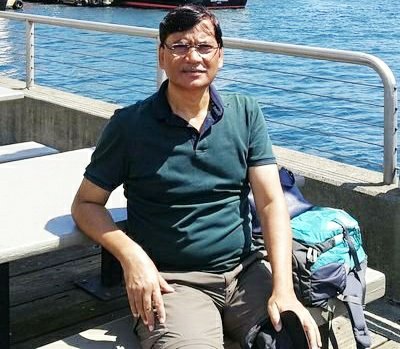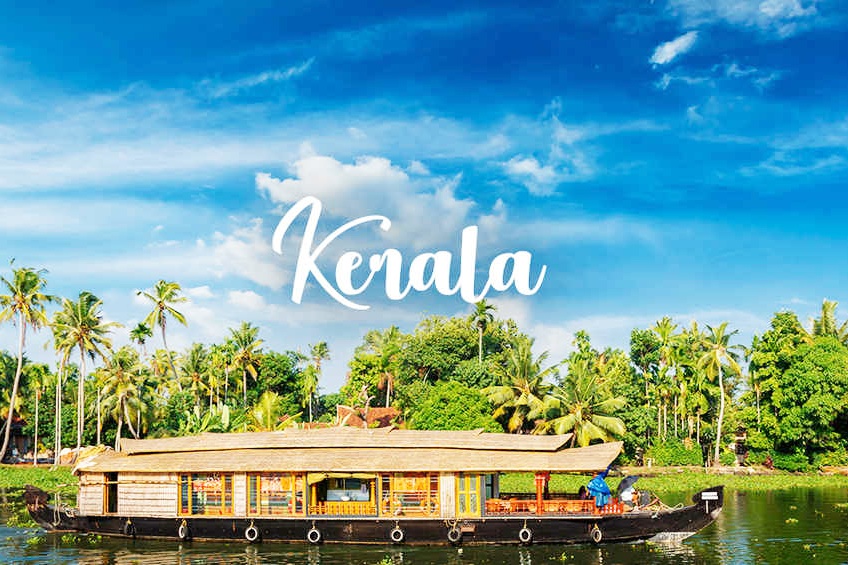Kerala Silverline Project: How KRDCL and SYSTRA have thrown rules and norms out of the window
Kerala State can eventually take credit for building India’s first Conventional High Speed Rail-line. If the State Government and Railway Board does the right things immediately to safeguard the public interest, I will say the national interest will also be saved, said Alok Kumar Verma

Read this report for a clearer understanding of how rules and norms were thrown out of the window to prepare the Feasibility Report of May’19, and why the state Govt should not allow KRDCL to spend even a rupee more on preparation of the DPR for the Silverline Project.
The alignment of Silverline Project which farmer chief engineer, NRly Alok Kumar Verma prepared for the Preliminary Feasibility Report of March’19 passes through city centre at all places except two. The report (which was prepared by Systra, who are the General Consultant for the project) said that by adopting Broad Gauge the alignment can be further improved to improve access, reduce cost and increase traffic.

The new line will be integrated with existing network so all existing Rajdhani, Shatabdi and mail/express trains will also run on the new line reducing journey time of those trains by 3 to 6 hrs. No negative impact on environment because about 60% line will be elevated. There is every reason why this alignment should have been adopted.
This is the alignment I prepared for the Preliminary Feasibility Report of Mar'19. See key data in the table on the right hand top corner. pic.twitter.com/ziPHwhiw6g
— Alok Kumar Verma, IRSE (Retd.) (@trains_are_best) March 9, 2020
With this alignment, requirement of land and dislocation of existing habitation is drastically reduced because about 65% line will be elevated on viaducts.
With Broad Gauge cost of construction of the line will be further reduced because existing stations at Thiruvananthapuram, Kollam, Ernakulam, Kozhikode, Thrissur, Chengannur, Kannur, Kasargod, Vadakara, Thalassery, and Tirur will be used.
Genesis of the Feasibility Study:
Conventional High-Speed (200-250 kmph) can be implemented in two ways: By realigning and upgrading existing lines and by building new lines. When Verma was approached, he agreed to team up with SYSTRA to prepare the Preliminary Feasibility Report of March’19 for the Silverline Project because of its larger implications for introducing Conventional High Speed on the Indian Railway network.
Unfortunately, after Verma left, instead of defending its report, Systra succumbed to pressures from KRDCL (which were already building up when he was there) and reversed its stand on each and every one of the issues without giving any reasons.
Systra did it knowing fully well the larger implications, because the report highlights the larger issues involved. KRDCL never fails to brag that Systra is a Paris based company, implying it is a cunsultancy of international repute. What an expoitation of reputation!! Mr Verma questions, if Systra in India is anything more than a brand name.
Let us take a look back at how feasibility study for an alignment in hilly terrain was actually done. This is about the new alignment which was proposed by Alok Kumar Verma for the Katra-Banihal Kashmir rail link in 2008.
1. First an alignment was drawn on Google Earth.
2. Next, a Preliminary Geological Survey was done by Geological Survey of India.
3. Next, ground levels were measured at the sites of all bridges and cuttings/embankments.
4. Then, a team of engineers and geologists inspected critical locations.
5. Next M/s Amberg of Switzerland was engaged to carry out topographic survey and prepare a geological and geotechnical risk analysis report.
Based on the above work alignment wss decided for the next stage of preparing the Detailed Project Report (DPR).
Kerala Silverline Imbroglio:
— Alok Kumar Verma, IRSE (Retd.) (@trains_are_best) March 16, 2020
This is how feasibility study for an alignment in hilly terrain was actually done:
This is about the new alignment I proposed for the Katra-Banihal Kashmir rail link in 2007.
1. First an alignment was drawn on Google Earth.
2. Next, a.. https://t.co/YU8bt9ydN6
Thus, preparation of DPR for the new alignment for the Kashmir Rail Link was started only after detailed examination of feasibility of the proposed alignment was carried out.
On Silverline Project KRDCL and Systra have thrown rules and norms out of the window and prepared Feasibility Report of May’19 on just Google Earth topographic data. Even z-coordinate was not verified by carrying out spot level check using DGPS. No geological and geotechnical ground studies were done by Systra or KRDCL.
The objective of doing a preliminary geological/geothecical survey in the initial design of alignment is to avoid unfavorable locations and stretches to the extent possible because otherwise the remedial measures may be very complex and costly.
A geotechnical risk report (which is prepared based of ground data) provides more details, and it is used along with the topographic survey data to optimise the alignment. An alignment thus prepared will give a fair assessment of technical feasibility and cost of construction.
What would happen if the Feasibility Report of May’19 is accepted by Railway Board?
This is what is likely to happen on the Silverline Project in Kerala in next 2 years due to mishandling of the project by KRDCL and Systra, which Verma have written about in his posts.
Verma says, property developers will buy land in the outskirts where stations are proposed at Ernakulam, Kollam, Chengannur, Kottayam, Thiruvananthapuram and other places. They might actually be already buying the land. They will make huge profits in property development on the promise and lure of the highspeed line to the buyers.
A barrage of media reports extolling the project is building up expectations about the new line among people, he said.
The Project itself line will run into all sorts of problems because the alignment KRDCL and Systra have prepared is technically infeasible due to the adverse hilly terrain. Within a year, the Govt will find that the project will cost more than double of what KRDCL claimed, that land required will also be about twice of what KRDCL claimed, Verma said.
Verma says, the Government will also discover that due to its faulty design, the line will severely aggravate flooding in the region. While the Government will be busy finding solutions, making changes etc, in between the property developers will have made huge profits/gains.
It is not difficult to predict what will be the future of the line, but this much is almost certain that 3 to 5 years or more will be gone in this confusion. Some land will be aquired for building offices etc for the project. Contracts will likely be awarded for supply of Standard Gauge coaches, locomotives, train-sets, signalling system etc, he said.
Verma say, the suppliers will likely make windfall profits due to their hold on Standard Gauge technologies. What will be the total loss to the public interest and Government resources can be imagined.
To stop this the Government must act immediately. The Government must call for the Preliminary Feasibility Report of March’19 for full understanding of all the shenanigans of KRDCL and Systra, and quickly move forward to salvage the plan to build this 200-250 kmph high speed line. Kerala State can eventually take credit for building India’s first Conventional High Speed Rail-line.
If the State Government and Railway Board does the right things immediately to safeguard the public interest, I will say the national interest will also be saved, Mr Verma said.
Kerala Silverline Imbroglio:
— Alok Kumar Verma, IRSE (Retd.) (@trains_are_best) March 16, 2020
This is how feasibility study for an alignment in hilly terrain was actually done:
This is about the new alignment I proposed for the Katra-Banihal Kashmir rail link in 2007.
1. First an alignment was drawn on Google Earth.
2. Next, a.. https://t.co/YU8bt9ydN6
#IndianRailways #railwayboard #ClimateChange #publicpolicy #kerala200kmphline #railways #railwayengineering #KeralaFloods #KeralaSilverlineProject #AlokVerma #KeralaTransport #KeralaEcology #KRDCL #SYSTRA #UrbanSprawl #railtechnology #Geology #megaprojects #EngineeringGeology #AlignmentSurvey #Geotechnical #Engineering #KeralaGovernment #ConventionalHighSpeedRailLine


